Tree Frogs Galore
A tree frog is a type of frog that spends a significant part of its life in trees, a state known as arboreal. Various lineages of frogs within the Neobatrachia suborder have evolved into treefrogs, even though they are not closely related.
Hey there! We have some awesome tree frogs at Friendly Pets, including Adelphobates RED, Anthony San Isabel, Mantella Blue Leg, and Tinctorius Frogs. If you're looking for something unique, don't hesitate to give us a call! We're always happy to help you find the perfect pet.
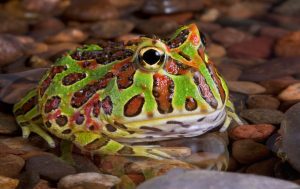
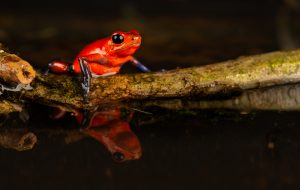
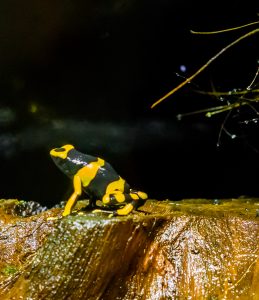
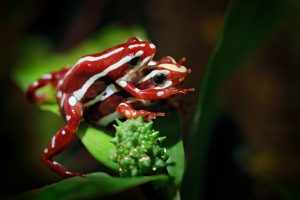
Mantella Blue Leg Frog
Frogs are all the RAGE $160.
Did you know that the blue-legged Mantella is a really interesting frog? It usually lives on the floor of the rainforest, but it also likes to climb up on low plants and explore the understory layer. What's really cool is that they are social creatures and live in small groups, without being too territorial. They even have family groups that live alongside each other! However, during the breeding season, they can get a bit aggressive and territorial. But for the most part, they're really friendly frogs!
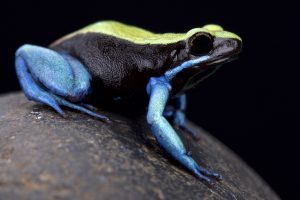
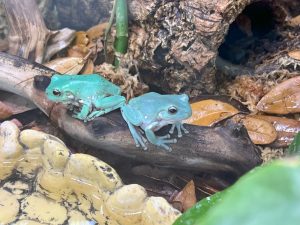
Whites Tree Frog
Nickname the Dumpy Frog!
Hey there! If you're new to keeping frogs, you'll love tree frogs! They come in all sorts of colors and patterns, are pretty brave creatures, have a loud and distinctive call, are larger than other frogs, and are super easy to handle. Plus, you can house them in groups, which makes them even more fun to watch and care for. Enjoy!
Albino Pac-Man Frog
We have a rotating stock of different Pac-Man species. Don't be shy—inquire if you want a specific type.
Native to South America, Pacman frogs are amphibians that are relatively common in the pet trade. As strictly terrestrial amphibians, they are very poor swimmers. Instead, they spend most of their time in a humid environment with damp leaf litter. Pacman frogs get their common name from the popular PacMan arcade game because, like the animated character, they have a rounded appearance with giant mouths. Pacman frogs are not difficult to care for and are fascinating pets. However, for people who like their pets to be active or interactive, the Pacman frog may not be a good match, as it is not the best pet for handling.

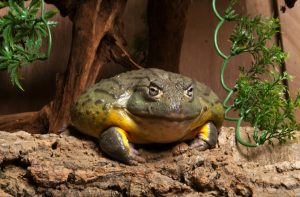
Pixie Frog OUT OF STOCK
$120.00 LIFE EXPECTANCY: 20 to 40 years if bred in captivity and receiving proper care
This is the world's second-largest species of frog with males reaching up to 10 inches in length!
Pixie Frogs are omnivores and will eat animals that are almost the same size as them. They will only eat plants if they are hungry. They are a sit-and-wait predator that eats every couple of days. African bullfrogs have a strong sense of sight and will eat anything that fits in their mouths. Captive adults are frequently fed earthworms, crickets, super worms, roaches, and mice (feed sparingly). In the wild, these animals are known to eat other amphibians and small reptiles. Bullfrogs are prone to obesity especially those fed large amounts of rodents. It is recommended to feed rodents to Pyxies only once every 2 or 3 weeks. Pyxies under three inches long should be fed daily what they will consume in 15 minutes. Sub-adults and adults should be fed 2-3 times a week in the same manner.
Vietnamese Mossy Frog OUT OF STOCK
$190.00
Mossy frogs make amazing display animals — you can use red or “moon” nightlights (not heat lamps) to illuminate their enclosure at night so you can better observe them when they’re most active.
These masters of disguise live in rainforests. Most species are semi-aquatic, living around and breeding in tree holes or rocky pools. Fortunately, this habitat is easily replicated in the terrarium. A glass aquarium with a screen top or a front-opening glass terrarium is both great choices. When setting up the habitat, take into consideration the adult size of the species you’re planning to house. Larger species, such as the Vietnamese mossy frog, should have about 10 gallons of space per frog.
Because these frogs are semi-aquatic, water is important and will play a major role in their enclosure design. The frogs do not require running water, mossy frogs like enclosures with stagnant water — no filtration required! Oddly enough water that is too clean can lead to the development of eye problems. Mossy frogs are insectivores and thrive on a diet of gut-loaded crickets. Other appropriately sized feeder insects, such as wax worms, Phoenix worms, Dubia roaches, and even small hornworms may be offered via feeding tongs. Make sure all feeder insects are dusted with a quality vitamin and mineral supplement.
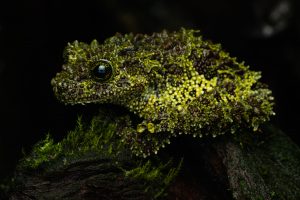
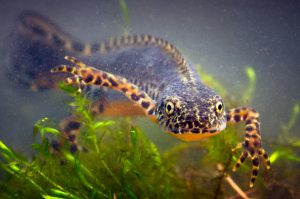
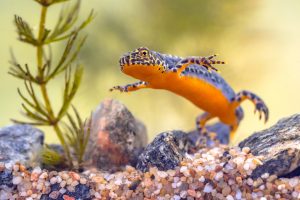
Newt
Yellow Spotted Newt Out Of Stock
Newts are small semi-aquatic amphibians that look like a cross between a frog and a lizard. Newts possess several interesting characteristics. For example, though they may look cute and harmless, they can be dangerous; toxins secreted through the skin as a defense mechanism could kill a person. ( But not our Newts, we have non-poisonous Newts) Newts also can regrow lost limbs and organs. That ability makes them important subjects in medical studies on regeneration. Also, some newts have flown on space missions.
